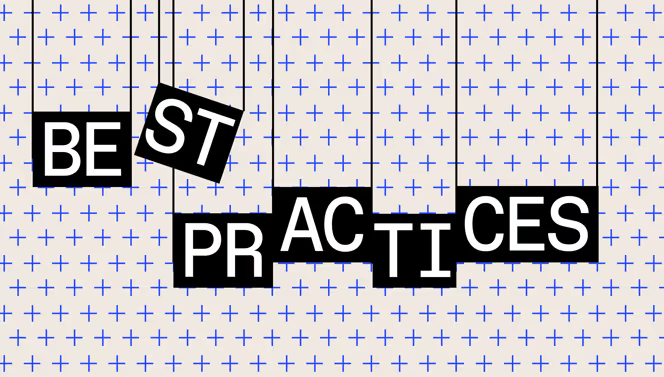EX without the fluff: Workleap's HRBPs share what really drives engagement and performance
.avif)
%20(1).png)
Employee experience (EX) has become a catch-all phrase — so broad that it often loses meaning. At HRPA Ignite, two of Workleap’s Senior HR Business Partners, Sarah Azadi and Samin Sadeghi, set out to change that. In their fireside chat, they cut through the noise, highlighting what truly drives engagement and performance in today’s workplace.
Their conversation was refreshingly unfiltered. No buzzwords, no vague theories. Just real, actionable insights from two HR leaders who work closely with managers across all functions. The key takeaway? Employee experience isn’t about perks or grand gestures; it’s about continuously evolving to meet employees where they are.
Why are we still talking about EX in 2025? (Spoiler: it’s not a one-and-done initiative)
Employee experience isn’t just about making work more enjoyable. It directly impacts two critical business outcomes: engagement and performance. A positive EX fosters motivation, productivity, and retention. A poor EX leads to disengagement, turnover, and declining results.
The challenge? EX is never static. Organizations evolve, employee expectations shift, and the way we work continues to change. “A common mistake I see a lot of organizations make is thinking they can find a one-time solution or initiative and never revisit their EX again,” Samin pointed out.
The businesses that lead the way are constantly iterating and improving. But how do you know what truly moves the needle on EX and, ultimately, engagement and performance?
What are the most important elements of EX? HR leaders weighed in
A poll conducted during the fireside chat revealed that growth and development (30%), work environment (26%), and alignment to an organization’s purpose and mission (17%) are the most critical factors of EX. This data highlights a shift from surface-level perks toward deeper needs, something Samin hears about often when conducting exit interviews.
In a recent LinkedIn post, Workleap’s Co-Founder and CEO, Simon De Baene, shared this sentiment, saying:
"What really matters are much simpler, more fundamental things: a clear vision, a well-executed strategy, good ideas, solid talent, the right timing… and above all, alignment. Trends come and go, but the fundamentals remain. That’s what we should build on."
Does engagement equal performance? With a well-rounded EX, it can. Without one, probably not.
The results of our poll matter because engagement and performance don’t happen in isolation. Engagement without alignment leads to wasted effort, while high performance without engagement leads to burnout.
Organizations must balance both, ensuring employees feel valued and motivated while understanding what success means for the organization, and having a clear vision on how to get there. An employee experience that scores high on all the fundamentals will naturally bridge the gap between performance and engagement. More on this later!
Let's get back to the basics with Samin and Sarah's top 5 tips for a strong EX
During the conversation, Samin and Sarah shared actionable tips HR should prioritize in order to see the biggest improvement in their employee experience. Implementing all would be the best case scenario, but even starting small with one of these tips can have a noticeable impact.
1. Align leaders to a shared leadership philosophy
Leaders directly impact EX, yet organizations often lack a standardized approach to leadership. One way to address this is by aligning leaders from the start with dedicated leadership onboarding. “You can’t assume every leader has the same experience or approach,” Samin said. “It’s important to communicate what it means to be a leader at your organizations.”
That includes making three things crystal clear:
- How leaders make decisions at your organization.
- How they manage performance and share feedback.
- How they communicate with their teams and cross collaborate.
When leaders know what’s expected of them, they’ll be much better ambassadors for your culture. Plus, they’ll nurture teams that feel engaged and have what it takes to perform.
2. Use data to drive decisions (without overwhelming yourself)
HR teams often struggle with not measuring enough or measuring too much and getting lost in the data. When you’re strapped for time and resources, knowing how to navigate data is fundamental. It helps you focus on the things that matter most and will drive the biggest impact.
The key is to identify just five or six key EX indicators and track them consistently. “Historical data is your best friend,” Sarah said. “Benchmarks are nice, but looking at trends over time is what really helps you make informed decisions.”
When HR is data-savvy, they can form stronger partnerships with people leaders by proactively identifying gaps and working with leaders to solve them. For example, tracking early offboarding rates can reveal hidden issues in onboarding or culture misalignment. “If employees leave within six months, something is off,” she noted. “The role, expectations, or work environment may not match what was promised during hiring. Managers and HR can collaborate to fix that for the next hire.”
3. Listen to employees, but more importantly, act on their feedback
Gathering feedback is only half the battle; acting on it is what builds trust. “In hybrid and remote environments, it’s harder to pick up on workplace sentiment,” Samin noted. “HR and leaders need to be intentional about gathering feedback and making meaningful changes based on it.”
Tactics like engagement surveys, one-on-one meetings, informal coffee chats, and stay interviews can provide deeper insights into employee needs. The key is showing employees that their feedback leads to real change. That’s what makes them feel truly valued.
“If things aren’t working, you want to create a culture where those lines of communication are flowing and everyone is exchanging feedback with one another, because ultimately, they care and want a more positive experience,” Samin emphasized.
4. Prioritize growth, however it may look
The best way to create disengaged, underperformers is by letting employees feel like they’re stagnating at work. Employees need to see a future for themselves within the organization, but growth isn’t just about climbing the corporate ladder.
Promotions are great when there’s a strong business need and the right candidate, but new business needs don’t arise every day. And helping someone move on to the next level when neither them nor the business are ready is not exactly a recipe for success. So, what’s the right balance?
Focusing on learning and development is a gamechanger. HR must think about how the organization can support employees to develop their skills, expand expertise, and learn new tech stacks — all of which create new opportunities for career progression.
Sarah highlighted how Workleap enables this through stretch assignments and cross-functional projects, allowing employees to grow laterally when vertical promotions aren’t available.
5. Bridge the gap between engagement and performance
There’s a common misconception that high engagement automatically leads to high performance. That’s not always the case. “You can have a tight-knit, engaged team, but if they’re not aligned with the business’s goals, their engagement won’t translate into results,” Sarah explained.
On the flip side, a high-performing team can quickly become disengaged if underperformance isn’t addressed. “If one team member is struggling and leadership fails to take action, it can demotivate the rest of the team,” Sarah warned. “Performance impacts engagement just as much as engagement impacts performance.”
By integrating this perspective into leadership alignment and performance discussions, organizations can ensure that engagement translates into business impact.
Final thoughts: EX is everyone’s business
Sarah and Samin left the audience with a simple but powerful reminder: EX is a continuous process that requires collective effort. “We are all employees. We all impact one another, whether as leaders, peers, or colleagues,” Samin said. “It’s important to create a culture where feedback flows freely and people feel empowered to improve their own experience.”
The only constant in EX is change. Organizations that embrace this reality — and use data, leadership alignment, and employee feedback to drive meaningful improvements — will be the ones that see real engagement and performance gains in 2025 and beyond.
%20(1).png)

%20(1).avif)


.avif)
.avif)





.avif)


